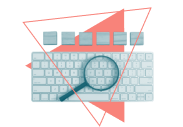Recession-Proofing Our Lives: 10 Real-World Tips to Protect Yourself and Feel Less Stressed
Key Points
Pause all non-essential spending and focus only on what truly adds value.
Build a safety net with a solid emergency fund in a high-yield savings account.
Make small income boosts and smart debt decisions to stay flexible and prepared.
The other night, a few of us sat around the kitchen table talking about everything going on—rising prices, weird shifts in the job market, and how even basic things suddenly feel out of reach.
One friend looked down at her phone and said quietly:
“My stocks are down again. I don’t even want to look anymore.”
Another mentioned she canceled her trip she’d been planning for a year.
And someone else said she couldn’t believe how a pack of underwear—underwear!—cost double what it did last month.
Not even talking about groceries.
We just sat there for a second. It wasn’t dramatic, it was just… heavy. Like we were all realizing at once that something’s changing.
And then someone finally said it:
“Are we heading into a recession?”
We all paused. And then nodded.
Truth is, we don’t know exactly what’s ahead—but we do know this:
We can’t afford to wait around and hope it gets better. We have to be ready.
So I went home that night and gathered everything I’ve learned, read, tested, and seen people do. Not financial theory.
Real-life steps. The kind of stuff that makes you feel even just a little more in control when everything feels like it’s slipping.
If you’re reading this and your chest feels tight thinking about bills, your savings, or what you might have to give up next—I want you to know:
You’re not alone.
I see you.
And we’re going to walk through this together.
Here are 10 things you can do today to feel more in control and financially prepared for the road ahead.
1. Cut discretionary spending—temporarily but completely if needed
Think about it like this: anything that isn’t absolutely essential (like rent, food, bills) can be paused for now.
You don’t have to give it up forever, just give yourself room to breathe.
That means saying no to things that don’t truly add value—those daily impulse buys or that monthly subscription you kind of forgot about.
2. Save or increase your emergency fund
If you don’t have an emergency fund yet, this is your number one priority.
If you do have one, boost it. Aim for 3–6 months of your absolute must-haves: housing, groceries, insurance, and essential bills. It’s your cushion. It’s what helps you sleep at night.
3. Move your savings to a high-yield savings account
Seriously, don’t let your money sit in a regular savings account earning next to nothing.
A high-yield savings account means your money works for you. It earns interest passively, so your emergency fund grows even while you’re doing nothing.
4. Audit your spending and cancel anything that’s draining your budget
Grab your bank statement. Go through it with a highlighter. Be brutally honest. Cancel anything you’re not using or that doesn’t bring real joy.
Gym memberships, duplicate streaming services, unused apps—you’ll be surprised how quickly the “little things” add up.
5. Track every dollar
Use an app, a spreadsheet, or even pen and paper. When you know exactly what’s coming in and going out, you feel so much more in control.
It’s not about restriction—it’s about awareness and peace of mind.
6. Strategically pay off high-interest debt
If you’re juggling credit card debt, focus on getting it down. Interest rates are not your friend in a recession.
Consider rolling it into a lower-interest personal loan or using the snowball or avalanche method to chip away at it consistently.
7. Find small ways to increase your income
You don’t need to launch a full business overnight. But maybe you sell a few things online.
Pick up a freelance gig. Rent out a parking spot. Every little bit helps, and side income can give you a mental buffer as well as a financial one.
8. Stock up on non-perishables—within reason
Don’t go doomsday shopping. But stocking up on basics like canned goods, rice, pasta, and household items when they’re on sale can save you stress and money later.
9. Make sure you’re properly insured
Double-check your coverage. Health insurance, renter’s or homeowner’s, auto.
The last thing you need in a downturn is a surprise expense from something that could’ve been covered.
10. Build community—don’t go through this alone
This might sound soft, but it’s real: emotional support is essential.
Talk to your friends. Trade budgeting ideas. Share resources. Check in. Recession or not, we weren’t meant to do this life thing solo.
Recession doesn’t have to mean panic. It’s about making smart moves, shifting priorities, and giving yourself the tools to feel strong—not stuck.
And if you’re reading this feeling like you’re already behind, let me remind you: starting now is enough. You’re doing something powerful by paying attention and taking action.



















